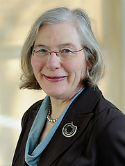Global burden of young-onset gastric cancer: A systematic trend analysis of the global burden of disease study 2019 Journal Article
| Authors: | Li, Y.; Hahn, A. I.; Laszkowska, M.; Jiang, F.; Zauber, A. G.; Leung, W. K. |
| Article Title: | Global burden of young-onset gastric cancer: A systematic trend analysis of the global burden of disease study 2019 |
| Abstract: | Background: While gastric cancer is generally declining globally, the temporal trend of young-onset (< 40 years) gastric cancer remains uncertain. We performed this analysis to determine the temporal trends of young-onset gastric cancer compared to late-onset cancer (≥ 40 years). Methods: We extracted cross-sectional data from the Global Burden of Diseases, Injuries, and Risk Factors Study (GBD) 2019. The burden of gastric cancer from 1990 to 2019 was assessed through indicators including incidence and mortality rates, which were classified at global, national, and regional levels, and according to socio-demographic indexes (SDI) and age or sex groups. Joinpoint regression analysis was used to identify specific years with significant changes. The correlation between AAPC with countries' average SDI was tested by Pearson’s Test. Results: The global incidence rate of young-onset gastric cancer decreased from 2.20 (per 100,000) in 1990 to 1.65 in 2019 (AAPC: − 0.95; 95% confidence interval [CI] − 1.25 to − 0.65; P < 0.001). Late-onset cancer incidence also decreased from 59.53 (per 100,000) in 1990 to 41.26 in 2019 (AAPC: − 1.23; 95% CI − 1.39 to − 1.06, P < 0.001). Despite an overall decreasing trend, the incidence rate of young-onset cancer demonstrated a significant increase from 2015 to 2019 (annual percentage change [APC]: 1.39; 95% CI 0.06 to 2.74; P = 0.041), whereas no upward trend was observed in late-onset cancer. Mortality rates of young- and late-onset cancer both exhibited a significant decline during this period (AAPC: − 1.82; 95% CI − 2.15 to − 1.56; P < 0.001 and AAPC: − 1.69, 95% CI − 1.79 to − 1.59; P < 0.001). The male-to-female rate ratio for incidence and mortality in both age groups have been increasing since 1990. While countries with high SDI have had a greater decline in the incidence of late-onset gastric cancer (slope of AAPC change: − 0.20, P = 0.004), it was not observed in young-onset cancer (slope of AAPC change: − 0.11, P = 0.13). Conclusions: The global incidence and mortality rates of both young- and late-onset gastric cancer have decreased since 1990. However, the incidence rate of young-onset cancer has demonstrated a small but significant upward trend since 2015. There was disparity in the decline in young-onset gastric cancer among male and high SDI countries. These findings could help to inform future strategies in preventing gastric cancer in younger individuals. © The Author(s) 2024. |
| Keywords: | adult; aged; middle aged; young adult; disease course; mortality; cancer incidence; sensitivity analysis; incidence; risk factors; information processing; risk factor; cancer mortality; sex ratio; groups by age; confidence interval; correlation analysis; statistical analysis; systematic review; stomach cancer; cross-sectional study; cross-sectional studies; sex difference; epidemiology; regression analysis; trend study; onset age; age of onset; stomach neoplasms; stomach tumor; gastric cancer; global health; geographic distribution; statistical parameters; systematic analysis; data extraction; humans; human; male; female; article; global burden; sociodemographics; clinical indicator; global disease burden; late onset disorder; young onset; temporal analysis; sociodemographic level; global burden of disease; average annual percentage change; young onset disorder |
| Journal Title: | Gastric Cancer |
| Volume: | 27 |
| Issue: | 4 |
| ISSN: | 1436-3291 |
| Publisher: | Springer |
| Date Published: | 2024-07-01 |
| Start Page: | 684 |
| End Page: | 700 |
| Language: | English |
| DOI: | 10.1007/s10120-024-01494-6 |
| PUBMED: | 38570392 |
| PROVIDER: | scopus |
| PMCID: | PMC11193827 |
| DOI/URL: | |
| Notes: | The MSK Cancer Center Support Grant (P30 CA008748) is acknowledge in the PDF -- Source: Scopus |
Altmetric
Citation Impact
BMJ Impact Analytics
MSK Authors
-
 316
316Zauber -
 38
38Laszkowska -
 19
19Hahn
Related MSK Work



